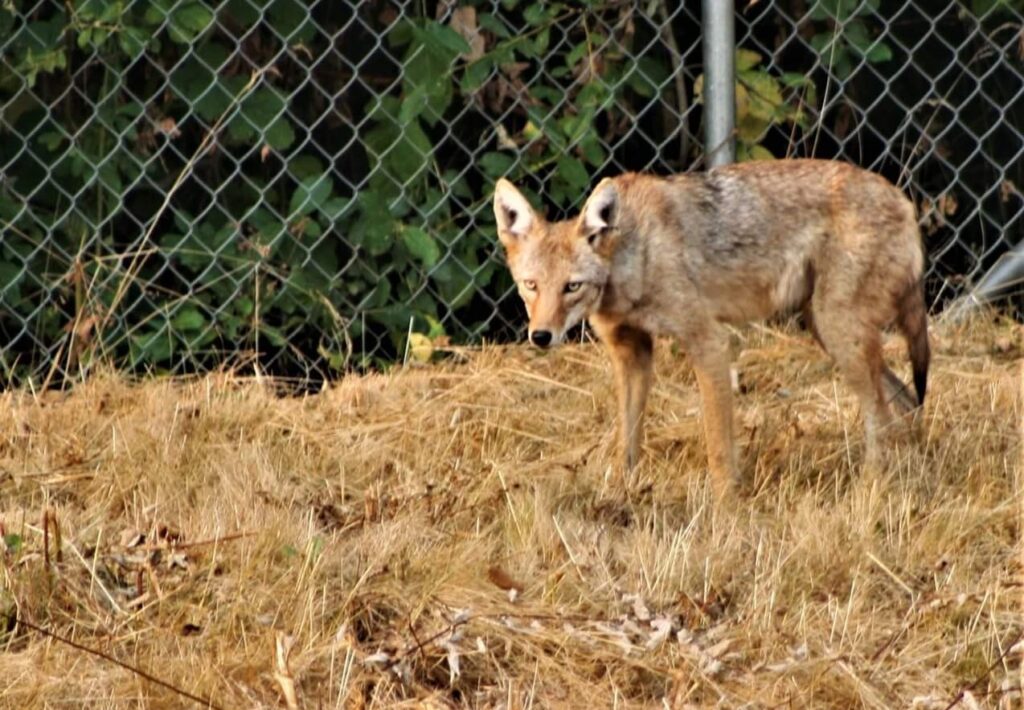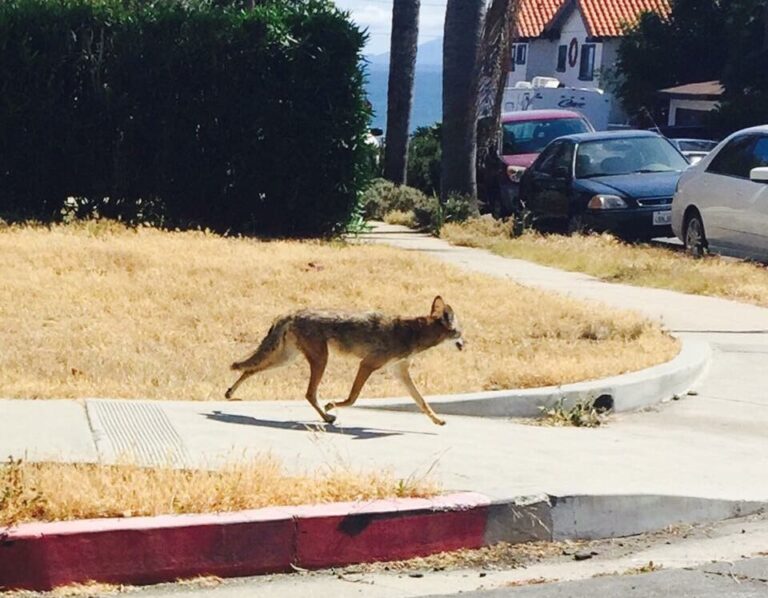
September 20, 2021
Is It Normal For Coyotes To Come Out During The Day?
Are you wondering whether coyotes come out during daylight hours? Well, contrary to what many people believe, coyotes are diurnal by nature, which means they are active during the day.
More and more coyotes are creeping into people’s neighborhoods to search for food, and coyote sightings are frequent, especially during the wintertime. Thus, it is not bad, but it’s perfectly normal to see coyotes come out in the daytime.
However, the nocturnal or crepuscular type of coyotes is active at night, dawn, and dusk). They have altered their circadian rhythm and have more nocturnal habits to evade human conflict whenever they reside in close proximity to humans in cities and urban areas. They will lie in caves, trenches, or rock crevices throughout the day and only come out when it’s dark.
Read on to explore more on the behavior of coyotes.
What Time Do Coyotes Come Out And When Are They Most Active?
Coyotes could be seen at any hour of the day and night. However, they are most active between dawn and sunset. At night, when they engage with other coyotes, you will hear them howl incredibly loud.
As there is less daylight during the winter, they are most active, and this is when most juvenile coyotes depart their parents and seek new homes.
They do not have a predetermined time when they will appear. This period will vary based on the amount of sunlight and the habitat of the coyote. They could emerge significantly earlier at dawn and dusk in regions receiving less daylight. In other areas, they begin appearing in the early evening as the sun starts to set.
Coyotes found in urban spaces tend to have fewer opportunities during the daytime, as they are close to humans. Those that have their habitat in rural areas, however, are highly active throughout the day as the limited human population offers greater hunting opportunities.
When And Where Do Coyotes Sleep?
Unlike most animals, coyotes are unbothered even if it rains while they are asleep. This is, however, dependent on the location and weather conditions at the time of rain.
During summer, they stay in place and do not take shelter. Male coyotes select a bedding site that has proper drainage and is elevated. As defensive cover for their dens, mother coyotes usually prefer shrubs and thick leaves.
Coyotes sleep in dens in urban areas, primarily in parks, golf courses, old building ruins, drainage pipes, and more. These dens are usually ones that other creatures like badgers and skunks have already dug out. They take it over and enlarge it to accommodate themselves inside.
Coyotes love desert climate because of plenty of prey, including snakes, raccoons, rodents, birds, and land for shelter. To outline their territory, they spray urine. The coyotes make burrows in the damp sand and sleep there.
Owing to the hard winter climate, coyotes love sleeping in covered spaces but go out to search for food. Winter is a mating and breeding season for this wildlife, thus, they seem to be more active and conspicuous.
Summer is the coyote’s best season since it provides abundant shelter, food, and hunting potential. During summer, these animals prefer to sleep in open spaces, under direct sunlight, to escape bugs and capitalize on the cooling breezes. As the temperature becomes hotter, they seek shelter in shaded areas.
However, when a coyote sleeps, it moves around a lot, lifting its head to look around before spreading out to sleep again. It constantly evaluates the surroundings for any threat or movements and takes appropriate action.

Where Can Coyotes Hide During The Day?
Coyotes hide in covered open areas, raised grounds, or in dens during the day. Dens are most commonly seen in parks and forest areas, shrubbery, preserves, golf courses, and other such regions. These are difficult to come by in urban areas.
These animals also rest in rocky areas and locations where there are fewer humans or predators like wolves throughout the day. They can also use their dens throughout the breeding season. Otherwise, a coyote may rest in a shelter or out in the open during the day.
How Can You Tell If Coyotes Are Nearby?
– Howling
Coyotes tend to announce their presence by howling at night, or sometimes during the day. They howl in packs to alert other groups that their area has been conquered. The same sounds may also aid in their bonding, or, who knows, it may just feel great for them.
Other noises, including barking and whining like a small dog, could also be observed when coyotes are nearby.
– Scats
Like other animals, when coyotes are nearby, they often leave unwelcome gifts behind – feces on the ground. Unlike feces from a dog or another animal, the coyote scats are often filled with hair and bones from their meal. These droppings are usually formed like ropes and are used to establish territorial limits.
– Tracks
You can spot coyote tracks in the muddy terrain as well as dry sand. Although you can easily confuse their tracks with those of a large dog, the coyote strides are relatively longer. What’s more, they move in more direct lines.
– Dead Animals
Lastly, coyotes do not always consume the entire animal. The meal remnants that coyotes leave behind are usually strong evidence of coyote presence. These can include rabbit or rat carcasses, as well as sheep and domestic goats.
Even though coyotes do not usually pose much of a threat to people, it is advised to call a wildlife control professional as soon as you spot a coyote on your property.
Our experienced technicians at Westchester Wildlife will assess your coyote problem, and then quickly and safely trap and remove the animal.
Don’t wait – call our experts for all of your coyote control needs in Westchester, Dutchess, Putnam Counties, NY, and Fairfield County, CT.
